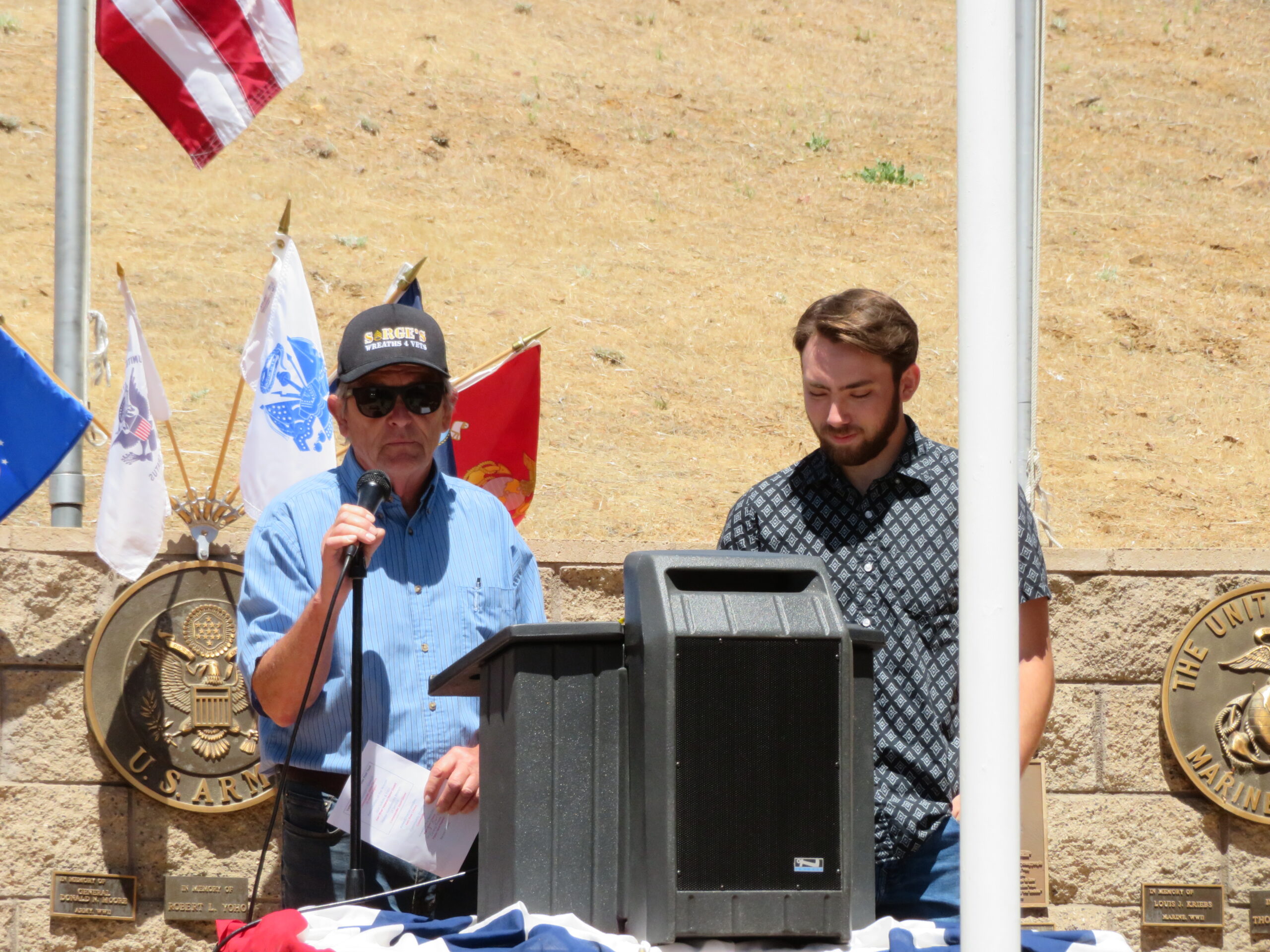Robert Gomez, chairman of the Tubatulabal tribe
Photo and Story by Catherine Stachowiak
Robert Gomez tribal leader of the Tubatulabal tribe provided a presentation for the Kern River Valley Historical Society, Tuesday April 23, at the Senior Center.
“My presentation is on the Tubatulabal tribe,” he said. He gave the society his Indian name, which translated means, “I have to go pee.”
In the 1980s, stirred on by old friends of his, during the American Indian Council in Bakersfield, Gomez realized he needed to “bring back the song.”
His tribe has a creation story but no migration story. The tribe theorizes it might have been part of an exodus from the Four Corners. Gomez met a professor at Fresno State who corroborated that theory.
Kern County is an indiginous tribal area, which has many tribes. In 1990 Gomez began the pushing for a language program for teaching his tribe’s original language. Gomez’s research led him to conclude that a pseudo linguist and Berkley anthropologist named the tribe and its language by clumping different peoples together under one label.
Gomez said the tribe’s traditional area, is the North Fork River, Pozo area, South Fork River, Mount Whitney and where the two rivers meet, creating the Kern River, then going down to Bakersfield, at “The Place Where the Sun Rests.”
Gomez said his tribe’s language is at least 5,000 years old and is unique in that respect but is similar to the Aztecans, Comanche, and Shoshone among others. It is an Azteca language.
“Somewhere along the line we lost our identity,” Gomez said, because his people became Spanish citizens, and eventually Mexican citizens, then United States citizens under those governing California.
Soliders committed genocide on his people, and took some of his people, and people from other tribes to various places. “We have records of 58 Tubatulabal people baptized in the missions,” said Gomez. Most were at San Miguel Mission, others were at Mission San Buena Ventura, and other places. His people lived in a duality later, with Christianity and the traditional tribal beliefs.
Indians were caught in all the messiness of changes in governments, in California, because they couldn’t prove their citizenship. Treaties not being ratified, the Indians became homeless.
With the discovery of gold, gold miners, farmers, and settlers in California, and the Kern Valley, nothing was the same for the Tubatulabal tribe or other Indians. Indian youth were forced into assimilation with US society. Reservations and allotments were failures according to Gomez.
In 1934 the Indian Reorganization Act allowed the Indians to govern themselves and create a constitution, though some tribes didn’t because they wanted to maintain their own sovereignty. The act allowed national economic development, starting their own schools, and building casinos.
His tribe, more recently mitigated and negotiated with Bureau of Land Management for a sitting wall, with canopy and signage indicating tribal history at the French Gulch at a slick, which is the last of its kind not under the water.
Tubatulabal was excluded from the IRA funding with the excuse that no one could pronounce and spell the tribe’s name. Gomez said that the Tubatulabal language program still exists at Mount Mesa.
In the 2020s his tribe picked up a grant and has been attempting to seek Federal Recognition. His tribe now has the Grant Deed for a property the group acquired, up at the end of Fay Creek, and now has a mountain range named after Tubatulabal.





